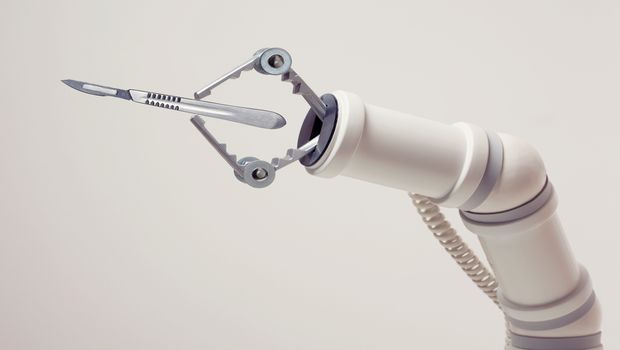Complete Sanitation of Robotic Surgical Instruments Virtually Impossible, Study Shows

It is virtually impossible to remove all contamination from robotic surgical instruments, even after multiple cleanings, according to a study published today in Infection Control & Hospital Epidemiology. The results show that complete removal of surface contaminants from these tools may be unattainable, even after following manufacturers’ cleansing instructions, leaving patients at risk for surgical site infections.
“One of the top priorities for hospitals is to treat patients safely and with minimal risk of infection,” said Yuhei Saito, RN, PHN, MS, lead author of the study and assistant professor at the University of Tokyo Hospital. “Our results show that surgical instruments could be placing patients at risk due to current cleaning procedures. One way to address this issue is to establish new standards for cleaning surgical instruments, including multipart robotic tools.”
The study examined 132 robotic and ordinary instruments over a 21-month period. Instruments were collected immediately after use to determine their level of contamination. The researchers used in-house cleaning methods that included manual procedures with ultrasonication following the manufacturers’ instructions. Measurements of protein concentration were collected from tools after three subsequent cleanings to determine changes in the total amount of residual protein.
Due to the complex structures of robotic instruments, these tools had a greater protein residue and lower cleaning efficacy compared to ordinary instruments. The cleanings were 97.6 percent effective for robotic instruments and 99.1 percent effective for ordinary instruments. As a result, researchers suggest that it might be necessary to establish new cleaning standards that use repeated measurements of residual protein, instead of only measuring contamination once after cleaning.
“These instruments are wonderful tools that allow surgeons to operate with care; but completely decontaminating them has been a challenge for hospitals,” said Saito. “By implementing new cleaning procedures using repeated measurements of the level of contamination on an instrument more than once, we could potentially save many patients from future infections.”
Reference: Yuhei Saito, Hiroshi Yasuhara, Satoshi Murakoshi, Takami Komatsu, Kazuhiko Fukatsu, Yushi Uetera. “Challenging Residual Contamination of Instruments for Robotic Surgery.” Web (October 31, 2016).
Source: Society for Healthcare Epidemiology of America (SHEA)
Together We Rise: Why AORN Expo 2025 Is a Must for Every Perioperative Nurse
March 31st 2025From April 5 to 8, 2025, thousands of perioperative nurses will gather in Boston for the 2025 AORN Global Surgical Conference & Expo—a transformational experience designed to elevate nursing practice, build lifelong connections, and advance surgical care.
The Sterile Processing Conference Survival Guide: How to Make the Most of Your Next Event
March 25th 2025From expert speakers to cutting-edge tools, sterile processing conferences, like the 2025 HSPA Annual Conference and the SoCal SPA's Spring Conference, offer unmatched opportunities to grow your skills, expand your network, and strengthen your department's infection prevention game.
Redefining Material Compatibility in Sterilization: Insights From AAMI TIR17:2024
March 24th 2025AAMI TIR17:2024 provides updated, evidence-based guidance on material compatibility with sterilization modalities. It offers essential insights for medical device design and ensures safety without compromising functionality.
The Guardians of Animal Health: Who Are Veterinary Infection Preventionists?
March 21st 2025Veterinary infection control experts Leslie Kollmann, BS, AAS, CVT, CIC, Denise Waiting, LVT, and Leslie Landis, LVT, BS, discuss challenges, zoonotic disease risks, and the importance of education, collaboration, and resource development in animal care facilities.